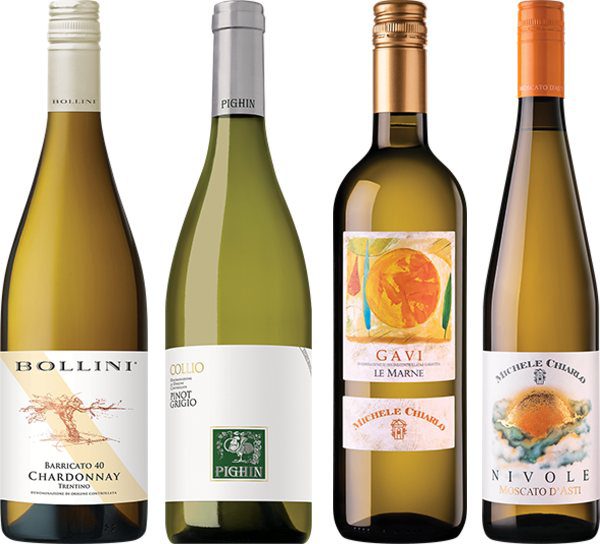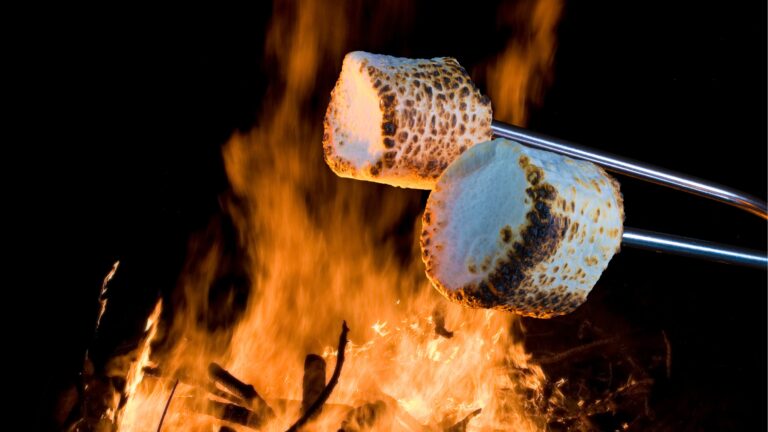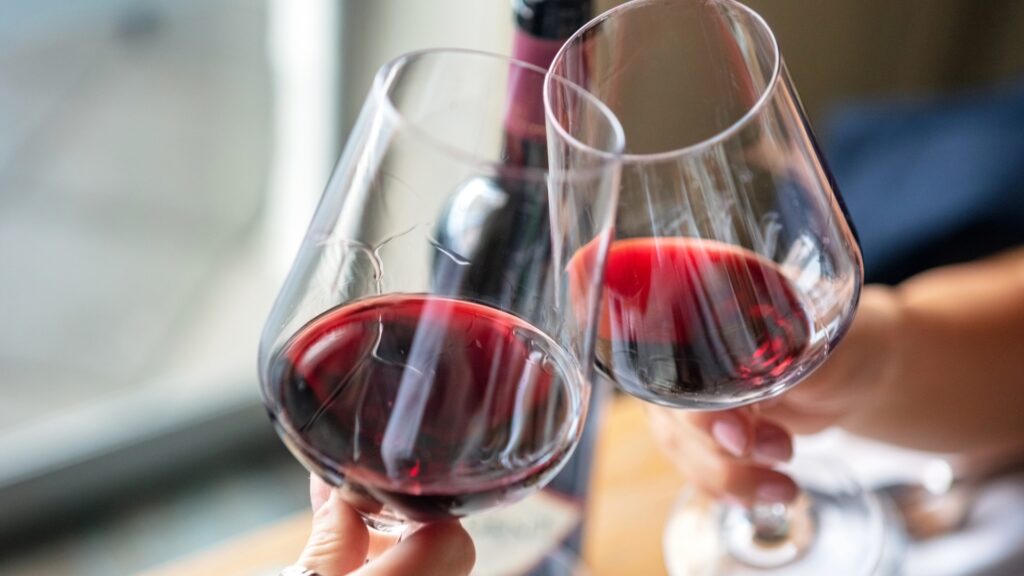A glass of red might be the first thing that comes to mind when you hear “Italian wine,” but the boot has plenty of crisp, fine whites to offer, too. You just need to know the best spots to get them. Often, great Italian white wines come from the north, which has little to do with the ol’ northern vs southern Italian stereotype (passionate and hot-blooded vs cool and contained—totally a myth, or is it?): rather, this has to do with climate, geography, and terroir.
Why Northern Italian White Wines Are So Delicious
What makes Italian white wines great, or, more broadly, white wines overall? A wine’s greatness often relies heavily on personal expectations and preferences, and even that varies with the vagaries of trend. But there are some generally agreed-upon variables that most people, these days, enjoy in a white wine.
- They are crisp – This comes from refreshing acidity.
- They are flavorful – They have distinct aromas and tastes; they’re not watered down (you know the stuff: those white wines that mysteriously taste like nothing at all yet still manage to leave a bad aftertaste).
- They are balanced – Some people like more or less buttery appeal to their Chardonnay, or more or less “crunch” to their sparkling wine, but these aspects should be overall balanced. In other words, this won’t be your boxed Chardonnay from Central CA that had sawdust stirred into it.
While much of grape growing and winemaking isn’t straight-forward like a math problem—what works in one region will not in another—there are some factors that tend to hold true across the board. Without getting too deep into technicalities, diurnal temperature variation and the right amount of sunshine both help white grapes retain acidity and stay fresh and flavorful. Some of the best Italian white wines come from regions with traits in both areas.
- A large diurnal temperature variation is where days are warm and nights swing cold, slowing down grapes’ ripening. This allows tasty polyphenols time to develop complexity and flavor. High elevation areas have great diurnal temperature ranges and plenty of sunshine, and…
- Grapes need sunshine like Goldilocks needs her porridge—not too hot, not too cold, but just right. If grapes don’t get enough of il sole, they won’t ripen sufficiently and the wine tastes like biting into a crabapple. Too much sun, and the flavors are overwhelmed by rapidly developed sugar molecules, resulting in a highly alcoholic, unbalanced wine.
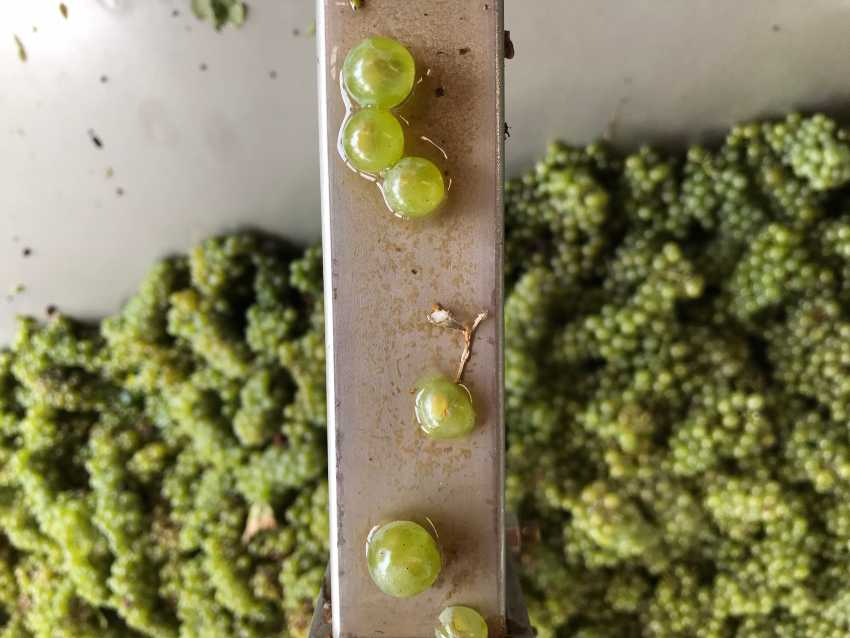
Where to Find Great Italian White Wines
These northern Italian regions have plenty of altitude (in some cases in the steep foothills of the Alps), great diurnal temperature variation, and enough sunshine to give the grapes a healthy tan. Here are some of the main northern Italian white wines to keep an eye out for.
Alto Adige
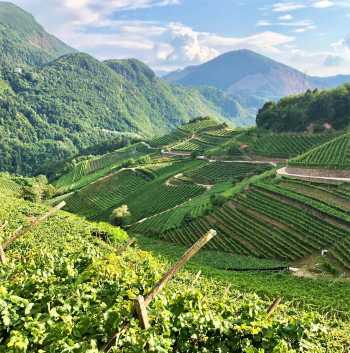
Alto Adige is Italy’s northernmost wine region, bordering Austria in the foothills of the Alps. Steep, terraced vineyards enjoy an especially wide diurnal range due to the altitude, making these wines very aromatic. The region is gorgeous, transporting you to Switzerland or Austria with its well-tended mountain chalets, cute huts, Alpine cows, and snow-capped peaks.
- Gewürztraminer: Aromatic and fruity, this grape has lush notes of lychee, tangerine, pink grapefruit, rose, and guava. Why the German name? Alto Adige used to be part of the Austro-Hungarian empire.
- Müller-Thurgau: Floral, nutmeg, and citrus aromas dominate this grape in Alto Adige. Northern Italy’s old vines and steep, high-altitude vineyards give this varietal wine great aging potential and serious character.
- Sylvaner: This is a variety whose origins may be German. It is a crisp, delicate wine with fruity notes of apple and lime, accompanied by a solid minerality.
Trentino
Trentino is south of Alto Adige, technically part of the same province that includes both regions: Trentino-Alto Adige. Its valley widens and the vines are still planted at high altitudes in pergolas. It’s another stunning region with postcard perfect views of the Alps.
- Trento DOC, or Trentodoc: Made from Chardonnay, Pinot Nero, Pinot Bianco, and Meunier, this is one of the best sparkling wines you (may) have never heard of. It’s strictly made with metodo classico and aged for at least 15 months on the lees—oftentimes much longer.
- Trentino DOC: Don’t confuse this with the sparkling wine! The white Trentino DOC appellation includes still wines made primarily from Sauvignon Blanc, Chardonnay, and Pinot Bianco. These wines show freshness and finesse, yet robustness because of the length of time they’re able to mature (thanks to that diurnal temperature variation). Try Bollini Barricato 40 Chardonnay Trentino DOC, which shows the white fruits, spiciness, and toastiness, yet delicacy this region can achieve.
Friuli-Venezia Giulia
This northeastern region of Italy borders Slovenia; you’ll also hear it called simply Friuli. It’s a region known for Pinot Grigio, particularly from the Collio region.
- Pinot Grigio: This grape and wine may not normally be synonymous with “concentrated,” but in this corner of Italy, they can be complex and more layered than any other PG off the shelf. Look for Friuli Grave DOC, Collio DOC, or Colli Orientali DOC. Try Pighin Pinot Grigio Collio DOC, which is a pure expression of the grape and region. Aged in stainless steel with no oak contact, the wine has notes of white fruit and citrus and a lively complexity.
Piemonte
This northwestern region bordering on France is most famous for its world-renowned reds like Barolo and Barbaresco. But its whites can be just as excellent a match for their white and black truffles, egg-rich pastas, and bounty of cheeses.
- Gavi: Alpine and Apennine altitudes plus sea breezes help prolong the ripening seasoning of this white. Made from 100% Cortese grapes, these are light-bodied with high acidity and are very aromatic: notes of green apple, pear, and citrus dominate. You’ll find these labeled Gavi DOC or Gavi di Gavi DOCG. A great example is Michele Chiarlo Le Marne Gavi DOCG, which has an intriguing mix of floral, fruity, and even savory notes to it.
- Moscato d’Asti: Our only sweet wine on this list, Moscato d’Asti is a treat for your palate. At 7% ABV, it is light and easy to drink, especially because of its frizzante No overwhelming sweetness here—just delightful notes of honeysuckle, orange blossom, pear, and mandarin orange. Michele Chiarlo Nivole Moscato d’Asti DOCG tends towards peach and apricot.
View this post on Instagram
Veneto
Another region known primarily for its reds like Amarone, don’t overlook the Veneto’s white wine Soave.
- Soave: This is grown at higher altitudes in clay soils—both factors that slow down ripening and create a backbone of acidity plus complexity. It’s made from 100% Garganega. Still up-and-coming compared to the other whites on this list, you should be able to find Soave at a more specialized wine store. It is medium-bodied with notes of melon, tangerine, peach, and herbs.
What to Pair with Italian White Wines
Thai food, truffles, smoked meats, creamy cheeses…From traditional regional dishes to international cuisines, these Italian white wines just get better when paired with dishes that complement their styles and flavors. If you’re looking for cuisines and culinary treats that make these wines sing, head over to Girl’s Gotta Drink to find recommended food pairings for each.
